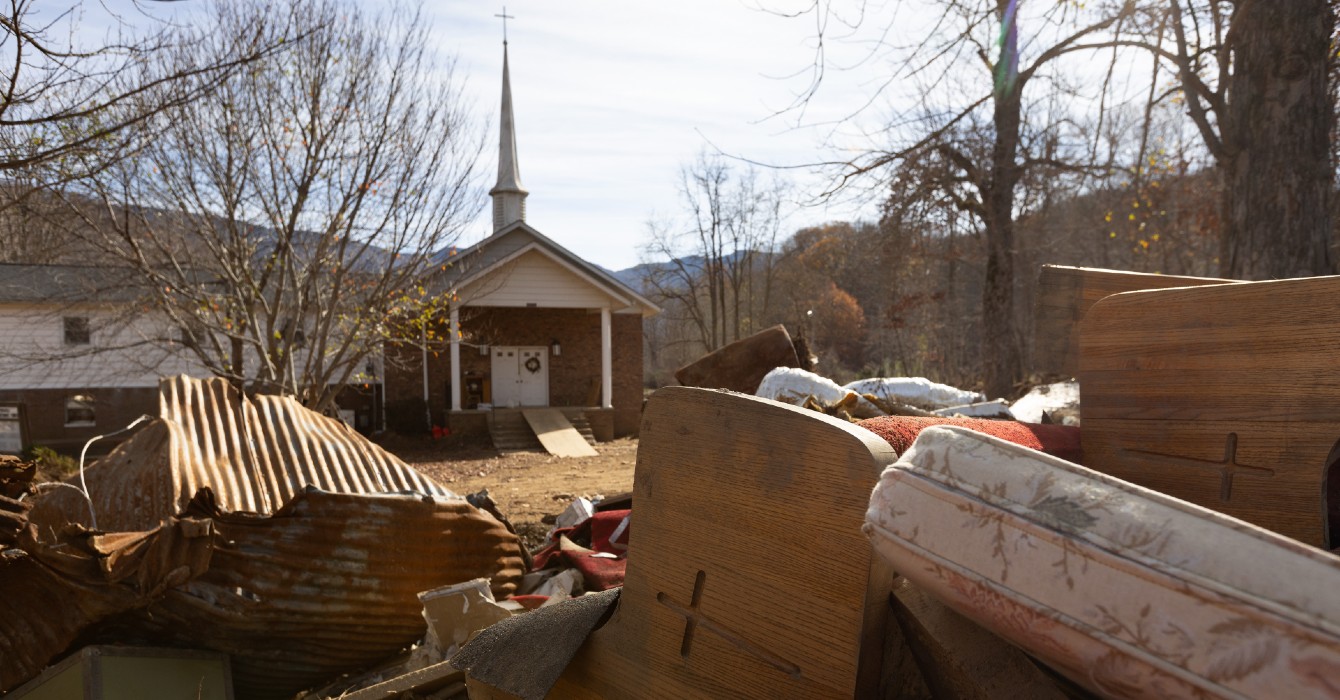It’s hard to believe that just over a week ago, our congregation was negotiating whether or not we should meet in person. Within days, we went from elbow bumps and singsong hand washing to social isolation.
That Sunday, most churches worshipped online or were canceled. Predictions swelled from weeks to months to a year and a half for our lives to begin to recover from the effects of the pandemic. For those of us who center our lives as pastors on embodied rituals of eating, drinking, washing and gathering, it was easy to feel as though we were lost in a fog.
But soon I noticed a curious change. If there was going to be a gap in our corporate worship, churches were going to fill it. By the end of the day, I’d been invited to participate in Facebook Live theology reading groups, an online small group and no less than four different formats for Zoom session prayer.
My colleagues began setting up home recording studios. They produced new small groups, buddy systems and home liturgies. They offered ideas such as tracking down pictures of our church members and taping them to pews as we prayed. They told stories of hundreds more people logging on for worship; they shared new book studies and Bible studies.
Clergy friends began sending out daily recorded messages and prayers. I received four invitations to gather digitally with other clergy to process and plan strategies for the times ahead.
What’s more, from the arts and education community, there were offerings of online doodling sessions with a famous children’s book artist, free operas broadcast by the Met, concerts streamed online and a worldwide catalog of university courses opened up to the public.
I did none of this. Instead, on Sunday night, after meeting with a small group to livestream our worship service, I got sick.
Within a few hours of developing a headache and sore throat, I was in bed, coughing continuously through the night with aches and soreness. As directed by the CDC, I called my primary care practice and scheduled an appointment. After a flu test came back negative, I quarantined with my four other family members, waiting for the results of a COVID-19 test, which came back negative a week later.
Being sick and carrying the mental weight of a potential diagnosis has given me a different window into the massive outpouring of new opportunities in this time of physical distancing. My friends in pastoral ministry are creative, wonderful and beloved people who want nothing more than to care for those who are scared, tired and anxious about the world.
And they are overproducing and overfunctioning.
Overproducing is not unusual in the church. It’s easy to get sucked into busyness, to lose sight of the boundaries of time and energy. A crisis, especially one that physically distances us when our first impulse is to gather, makes us especially prone to overfunctioning. How can we fill the gap? How can we help people feel connected? What resources are available? How can we be present?
But the truth is that there is no substitute for sharing materially in the rituals and community of our lives. If this weren’t the case, we’d conduct all our pastoral care by Zoom and all our visitation through FaceTime. Those technologies have been available for years.
I hope that we as clergy can create spaces to acknowledge the grief of disconnection instead of trying to fill the hole with simulacra. Such attempts may bridge the gap, provide a temporary fix, but they don’t acknowledge the disorienting realities of disconnection we are all facing right now. How are we making space to mourn instead of injecting more distractions and busyness into the lives of our churches?
It looks as though we might be in this for a while, and I’ve wondered -- how long can clergy keep it up? The amount of output I’m seeing is staggering.
The reality that many of us, especially those who continue to serve on the front lines of food and housing insecurity, will get sick over the coming months needs to be a part of our calculus, as does the reality that many of our beloved church members may also find themselves ill, some gravely. How are we preparing a long-term strategy for these possible futures?
But I’ve also wondered -- are clergy trying to make ourselves indispensable because of fears that we might be dispensed with? We live off the generosity of others. Many of my friends serve churches that are only one or two months’ offering away from closure, churches that live on the financial edge.
Seeing the numbers projected for joblessness, the possibility of a wrecked economy -- this has taken my breath away. Is our own sense of insecurity driving our ministry at this moment?
For the past week, I’ve mustered the energy for a couple of hours of work each day before collapsing into bed again. In between, I’ve helped my spouse guide our children through learning at home. I’ve helped my kids figure out how to navigate the emotions of being separated from friends and beloved family members. We’ve mourned together lost plans, including the likely loss of a summer sabbatical we’d been planning for over a year. The grief is palpable, the task immense.
And I’ve felt behind. I’ve felt a creeping guilt, as I watch the output around me, that I’m not doing enough.
One night, my youngest child and I took to our empty backyard and collected each kind of flower we saw. We gathered bougainvillea and weedy wild violet. We watched bees on our roses and saw green tips emerging from an apple tree. Somehow, it seems, earth is coming into spring, regardless of the mess human beings have made of our world.
For a few brief moments, I felt calm.
There is much ahead of us, a great sea of unknown. But we know that more will be required of us; more will be needed. There will be more adaptations to make and even more heartbreaking scenarios to navigate.
Instead of more output, more content, more forms of interaction, perhaps what we need are ways to slow down, to resist filling the grief of loss and isolation with busyness.














